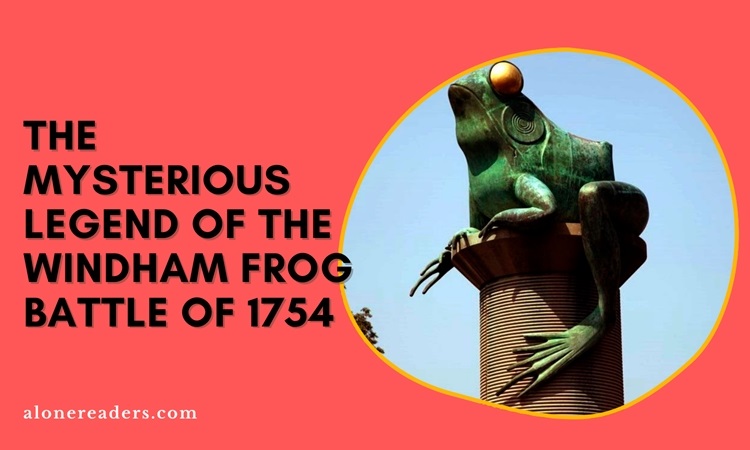
In the heart of the Connecticut Colony, the town of Windham harbors a curious and somewhat humorous tale from its past, known as the Battle of the Frogs. This local legend, dating back to 1754, captures a blend of fear, mystery, and eventual amusement that resonated throughout the community and has shaped part of its identity.
On a summer night in 1754, the residents of Windham were startled awake by a loud, unidentifiable noise. The source of this unsettling clamor remained a mystery, setting the townspeople on edge. Given the context of the times, during the French and Indian War, such disturbances were not taken lightly. The townsfolk, already wary of potential threats from French or Native American forces, were quick to assume the worst. The noise, seemingly emanating from the heavens, carried what some believed to be words or demands, possibly from an attacking force threatening the prominent men of the community.
The peculiar nature of the sounds led to various interpretations. Some residents thought they heard the beat of drums or shouted words, fueling their fears that Windham was under imminent attack. In response, a scouting party was hastily formed, tasked with investigating the source of the disturbance or, if necessary, negotiating with the presumed enemy.
As dawn broke, the truth of the matter was revealed in a rather anticlimactic but fascinating way. Scattered along the shore of a millpond east of the village lay hundreds of dead bullfrogs. It became evident that the source of the night's terror was nothing more than a fierce battle among the frogs. This amphibian conflict was attributed to a lekking behavior, a ritual where males fight over territory and mates, exacerbated by the diminished water levels in the drought-stricken pond.
The aftermath of this event was a mix of relief and humor. The Windham residents, having braced themselves for a human conflict, found themselves the unwitting participants in a frog war. This bizarre incident quickly became a running joke in the region, and the town of Windham decided to embrace this newfound quirkiness in their identity.
The frog, once a source of midnight terror, transformed into a symbol of community pride for Windham. The town adopted a seal featuring a frog, a nod to the legendary night that had brought them unexpected fame. This embrace of the amphibian extended into the 19th century, with Windham Bank featuring frogs on its currency, further cementing the creature's place in local lore.
The cultural impact of the Battle of the Frogs extended beyond mere symbols and currency. It inspired creative expressions in the form of ballads and even an opera, commemorating the event in artistic renditions. These artistic tributes showcased the community's ability to find humor and inspiration in an otherwise frightening experience.
Windham's connection to the frog legend found a modern manifestation in the Thread City Crossing in Willimantic, colloquially known as the "Frog Bridge." This bridge is distinguished by four enormous copper frogs, perched at each corner, serving as a whimsical yet prominent reminder of the town's unique history. These frogs not only symbolize the legendary battle but also stand as a testament to the town's ability to embrace and celebrate its past, no matter how unusual.
In conclusion, the Battle of the Frogs of 1754 in Windham, Connecticut, is more than just a quirky historical footnote. It is a tale that encapsulates human fear, misunderstanding, and the eventual embracement of the unexpected. It illustrates how a community can turn an incident, initially perceived as terrifying, into a source of identity, pride, and artistic inspiration. The story of the Battle of the Frogs remains a fascinating example of how legends can shape the cultural and historical landscape of a place, leaving a lasting impact on its identity and heritage.